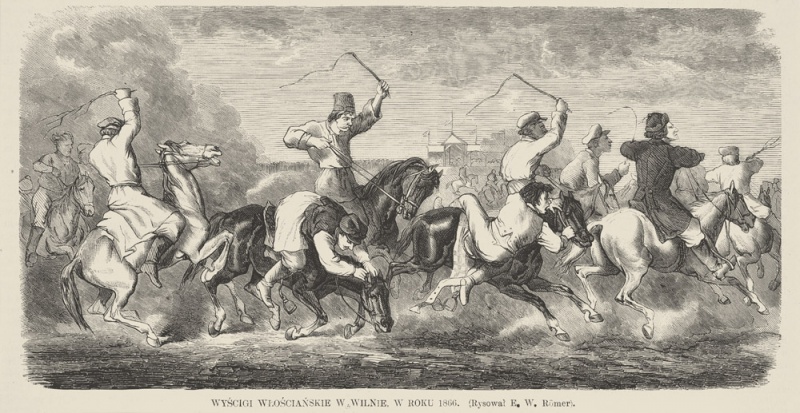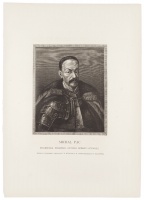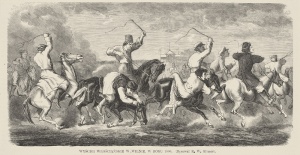

Peasant horse races in Vilnius
| Author: |
Bronisław Puc (mentioned 1870–1890) |
| Created: | 1866 |
| Material: | paper |
| Technique: | woodcut |
| Dimensions: | 11.90 × 23.60 cm |
Periodical TYGODNIK ILLUSTROWANY (Warsaw).
Woodcut after Edward Mateusz Römer.
Horse races became a popular form of mass entertainment in many European towns in the first half of the 19th century. The sport was thought to promote horse breeding and contribute to the development of better breeds, and could also help the economy. In contrast with other sports, it was not the skill and courage of the riders that mattered, but the beauty and speed of the horses. Horse racing started in Vilnius in 1857; it usually took place in May, and lasted for three days. The spectacle attracted large audiences. In 1864, the press covered the annual horse races, saying that not only were all boxes and stands full, but large crowds of people gathered around the circuit. The horses that participated belonged to both noblemen and peasants. There were over 50, from different districts, and ten of the horses won awards. Peasants’ horses from the Trakai district and from near Stakliškės were the best. Edward Mateusz Römer (1848–1900) drew the peasant horse races that took place in Vilnius two years later, conveying with amazing aptitude the impression of the racing horses, of jockeys falling, and the general mood of excitement.
The engraving by Bronisław Puc (mentioned in 1870–1890) was published in the Warsaw periodical Tygodnik Illustrowany (1866, No 363, p. 113). The prototype for the engraving, a signed ink drawing by Edward Mateusz Römer, is held in the National Museum of Lithuania.
Text author Rūta Janonienė
Source: Law firm Valiunas Ellex art album RES PUBLICA (2018). Compiler and author Rūta JanonienėExpositions: “Académie de Vilna. Vilnius Drawing School (1866–1915)”, 5 October – 26 November 2017, National Gallery of Art, Vilnius (curator Jolanta Širkaitė). "Vilnius Time", 5 June 2023 – 1 May 2024, Lithuanian Art Centre TARTLE (Užupio St. 40, Vilnius). Curators Ieva Burbaitė and Emilija Vanagaitė.









